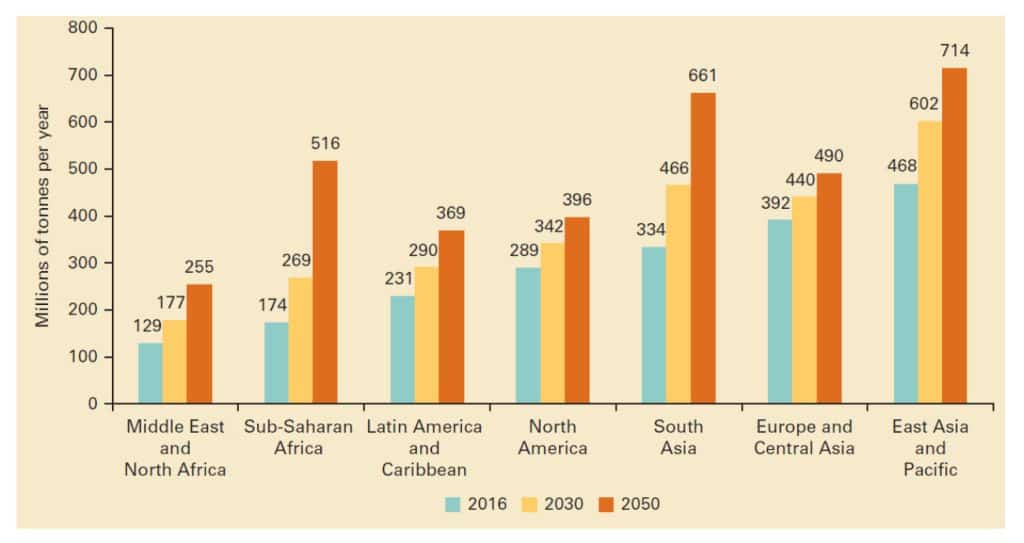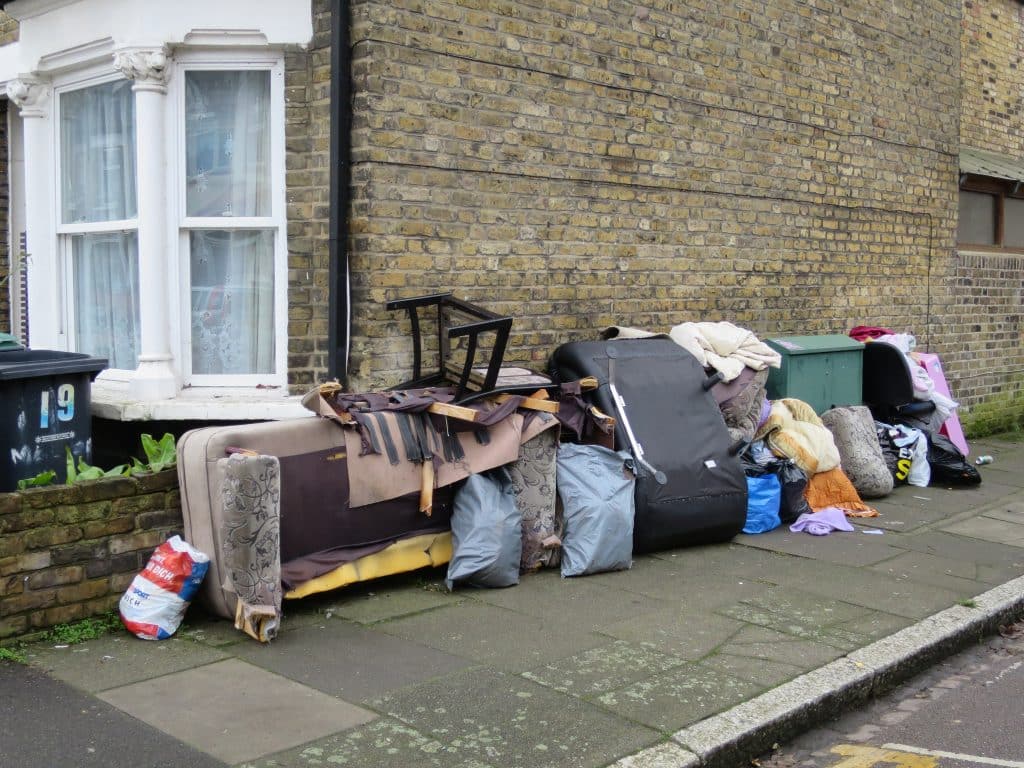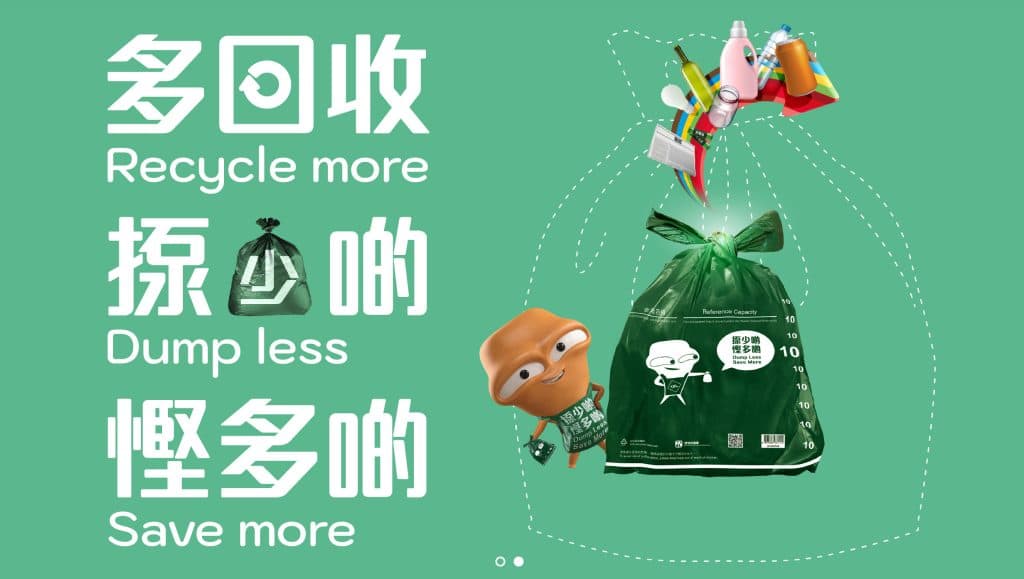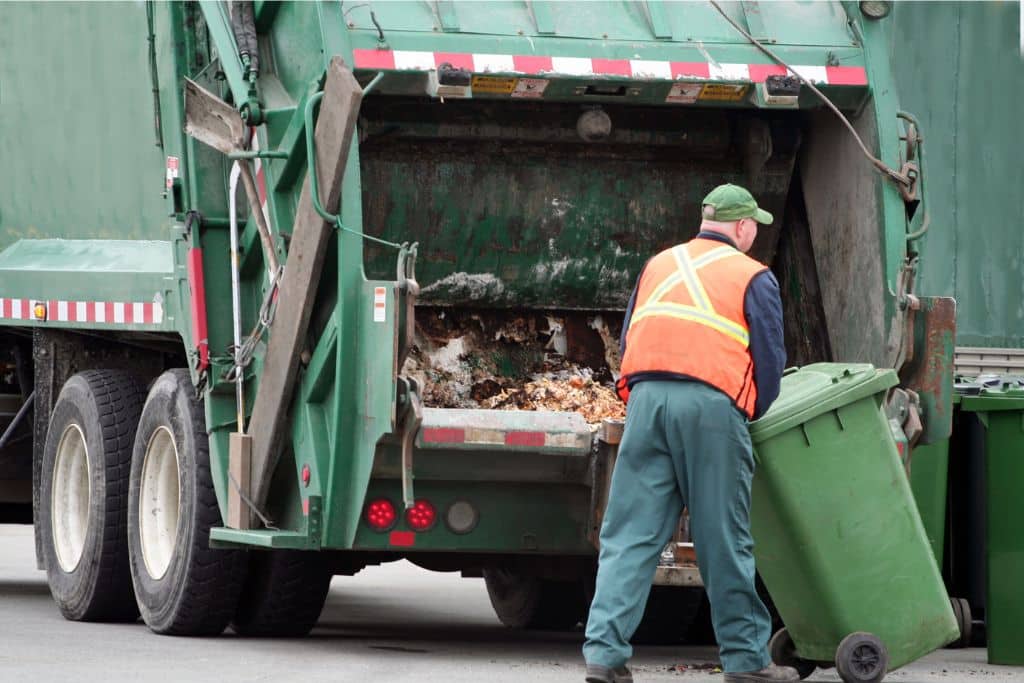About 3,353 tonnes of food are sent to landfill every day in Hong Kong, the equivalent of the weight of 233 double-decker buses. To fight the growing challenges of food waste and plastic pollution, in 2021, the city’s Legislative Council passed a new waste disposal ordinance which is set to come into effect on April 1, 2024. This article aims to explore the key features of the scheme as well as its potential advantages and drawbacks.
—
Background
Hong Kong generates a substantial amount of solid waste each day, which is causing long-term environmental problems on a local and global scale. Indeed, solid waste directly contributes to greenhouse gas emissions through the release of methane during anaerobic decomposition process of waste, a potent greenhouse gas with 84-86 times higher in global warming potential than carbon dioxide across a 20-year period.
You might also like: What Can We Do to Minimise Landfill Waste?
According to the Hong Kong Environmental Protection Department (EPD), in 2021, 5.67 million tonnes of solid wastes were disposed of at landfills, with municipal solid waste (MSW) accounting for over 70% of the total. 30% of it is food waste, followed by plastics (21%) and waste paper (20%). Hongkongers dispose of 1.53 kilogrammes of MSW per day, two times higher than the global average, with a recycling rate of only 31%.
Why is this alarming? According to data by the World Bank, the East Asia and Pacific region generated the most waste in 2016, and it is forecast to be the leading waste producer from 2030 to 2050. In 2016, solid waste treatment and disposal generated 1.6 billion tonnes of carbon dioxide-equivalent greenhouse gas emissions, accounting for 5% of worldwide emissions.
Hong Kong has already closed 13 of its landfills, and the remaining three – West New Territories (WENT), South East New Territories (SENT) and North East New Territories (NENT) – are expected to be depleted soon given the current disposal pace.
Recognising the urgent need to tackle this issue, in 2021, the government implemented the Municipal Solid Waste (MSW) Charging Scheme, a crucial step towards waste reduction and effective resource management.

Municipal Waste Charging
The Municipal Solid Waste Charging Scheme will be implemented in accordance with the “polluter-pays” principle for waste disposals from all sectors, including residential and non-residential establishments (commercial and industrial sectors).
The “Waste Blueprint for Hong Kong 2035” released in February 2021 includes a medium-term target to decrease the amount of waste disposed of per person by 40-45%, and to increase the recovery rate to approximately 55% through the implementation of regulatory policies, promotion of awareness campaigns, public education, and other measures. In the long-term, the government plans to achieve “Zero Landfill” by 2035 through the development of sufficient waste-to-energy facilities and by eventually eliminating the need for landfill disposal altogether.
Charging Modes
Dual charging modes have been proposed, namely “charging by authorised bags/labels” and “charging by weight via gate-fee.”
The designated bags charges apply to MSW collected by the Hong Kong Food and Environmental Hygiene Department (FEHD) via refuse collection vehicles (RCVs) and refuse collection points (RCPs), as well as by private waste collectors (PWCs) using RCVs equipped with rear compactors. Pre-paid designated bags will be available in nine sizes ranging from three to 100 litres. The price will be HK$0.11/litre for the first three years, and $11 per-label for oversized waste. Starting February 2024, these specified bags and labels will be accessible at authorised retail establishments such as supermarkets, convenience stores, pharmacies, and online platforms.
The “gate-fee”, on the other hand, applies to MSW collected and disposed of by private waste collectors (PWCs) using RCVs without rear compactors based on the weight of MSW disposed of at waste disposal facilities, excluding the mandatory use of designated bags or labels.

What Are the Benefits of a Municipal Waste Charging Scheme?
1. Encourage waste reduction and promote recycling
Due to limited land spaces for waste disposals, the primary objective of the scheme is to incentivise waste reduction at the source. By imposing charges on waste disposal, individuals and businesses are motivated to reduce waste generation, adopt recycling practices, and make informed choices about consumption patterns.
Under the new proposed policy instrument, each household in Hong Kong will pay up to HK$55 (approximately US$7) per month, on average, for waste disposal. Hence, it is expected residents and businesses will consider alternatives to save on waste charges. One way to do this is by following the ‘3Rs’ principle: reuse, reduce, and recycle.
You might also like: Rethinking How We Reduce Packaging and Packaging Waste in Hong Kong: An Interview with Paul Zimmerman
2. Shift responsibility and raise awareness
The scheme emphasises the principle of “polluter pays”. This will shift responsibility for waste management from the government to waste producers, making individuals and businesses more accountable for the waste they generate.
To facilitate the smooth implementation of the scheme, the government has launched extensive public education campaigns such as “Dump Less, Save More”. The project aims to provide firsthand experience in a quantity-based charging implementation through community involvement projects and collaboration with government departments and stakeholder groups such as the Environmental Campaign Committee, village representatives, green groups, and schools in launching activities. These initiatives aim to raise awareness about waste reduction, recycling, and the benefits of sustainable waste management practices.
You might also like: 4 Smart Waste Management Solutions That Are Revolutionising the Industry
3. Cut greenhouse gas emissions
A 2022 study on China’s household waste management system revealed that the measure is contributing to reducing climate change impacts, including emissions. This is because less municipal waste translates into less energy required to transport and process that waste.
Additionally, waste reduction can also reduce the amount of methane produced in landfills, which account for 8% of global emissions.
4. Waste Control
By introducing financial incentives, the scheme encourages individuals and businesses to actively reduce waste generation. This can lead to a significant decrease in the overall volume of waste disposed of in landfills.
A 2008 published study conducted on 954 Japanese municipalities with pay-as-you-throw (PAYT) systems in place experienced an overall reduction in waste generation. In particular, case studies of four municipalities showed that the implementation of PAYT programs reduced the amount of residual waste generated by 20% to 30%. Moreover, when combined with other measures, such as the recycling of containers and packaging, PAYT programmes were found to bring about significant reduction in waste.
5. Improve waste reduction and recycling efforts
According to the government, with the idea of “dedicated-fund-for-dedicated-use“, the revenue generated from the MSW charging scheme will be used to enhance waste reduction and recycling work, a move that is expected to improve the efficiency and sustainability of waste management in Hong Kong.

Potential Drawbacks
An introduction of a unit pricing system on waste disposal can significantly raise the cases of illegal dumping.
A research conducted between 2001-2003 and looking at 16 provinces in South Korea found that an additional increase in the pay-by-the-bag unit pricing system of legal disposal had little effect in reducing overall waste generation. For instance, a 1% increase in the legal bag price led to a 3% increase in the number of reports of illegal dumping. On the other hand, a 1% increase in the compensation for recycled goods led to a 6% decrease in the number of reports of illegal dumping.
Moreover, a 2003 study of 533 PAYT municipalities conducted by the Japan Waste Management Association found that 68% of municipalities had faced issues related to illegal dumping, with 42% experiencing inappropriate discharge and 26% experiencing increased illegal dumping.
Illegal waste disposal harms the environment and society by degrading public lands, lowering property value, affecting visual appeal, attracting more illegal waste disposal, and increasing government clean-up costs. Hence, it is imperative to formulate an effective policy that will prevent the outbreak of illegal waste disposal in Hong Kong and allocate resources towards the promotion of recycling initiatives.
A 2019 paper investigating the reasons behind illegal waste disposal suggested that the issue could be prevented by raising public awareness and eco-responsibility through education programmes as well as by emphasising the environmental and health hazards via visual stimuli and messages in text nudges at designated disposal sites.
Furthermore, the government enforcement efforts should be differentiated across different areas. For instance, the Environmental Protection Department intertwined with the Food and Environmental Hygiene Department (FEHD) can incorporate the utilisation of monitoring surveillance systems in blackspots such as staircase, refuse rooms, and roadsides to refrain people from illegal dumping.
Will the Scheme Work?
In this regard, MSW Charging, coupled with the banning of single-use plastics tableware in 2024, can be seen as transformative legislative measures taken by the Hong Kong government to address the long-standing environmental issues. The Municipal Waste Charging Scheme in Hong Kong represents a significant step in the city’s journey towards sustainable waste management.
By encouraging waste reduction, promoting recycling, and shifting responsibility to waste producers, the scheme can address the pressing waste management challenges faced by the city. With effective implementation and continued public support, the scheme has the potential to transform Hong Kong into a greener, cleaner, and more environmentally conscious metropolis. Though Hong Kong is in its initial phase of the MSW Charging scheme, prior examples from other countries can be taken into account to ensure the successful implementation.


















